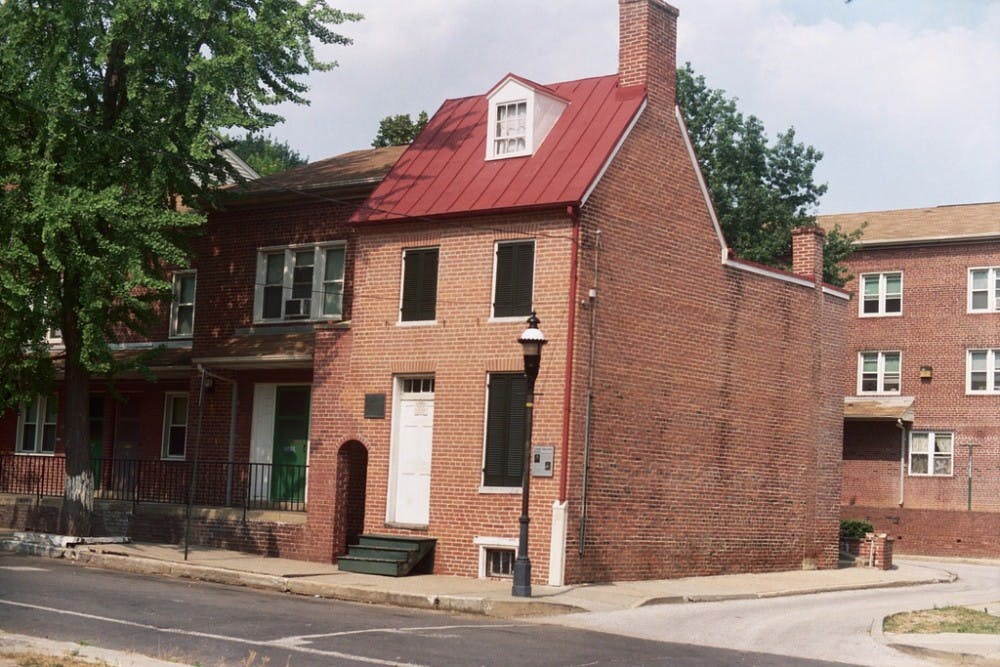On January 19th, Edgar Allan Poe celebrated his 199th birthday. So he's been dead quite some time. How does one celebrate the achievement of a dead author? You could read his work. Or you could visit his house. For any poetry fan, this is a site of pilgrimage. Located on 532 N 7th St, Poe's house stands at over 100 years old at the edge of Philly's Historic District.
From the outside, the house is your generic colonial–style home: red brick façade, symmetrical face, and rows of windows. It could almost be mistaken for a Penn building (not a beautiful one necessarily), but you’ll know you’re in the right place when you see a massive mural of Poe’s face and a black raven, its wings stretched wide atop a pole.
Open the door and an elderly volunteer dressed in all black greets you. She's one of many who run the Poe–themed gift shop inside. That is, if you consider a table next to the door with a few Poe–themed knick knacks a gift shop. Straight ahead from the foyer is a small, burgundy wallpapered room, crammed full of chairs and creepy paintings of the poet’s face approached from different angles commissioned by artists of the city. Every tour you take here will start like this. An informational video will tell you a bunch of facts any Poe–enthusiast already knows, but looking around, all the other visitors are distinguished and very mature.
On any given day, the house will host a number of events. Between readings of Poe's work in his library, you will be led around the house. After the dated info video finishes, you will be told to remain in your seats, which will be difficult considering the mounting excitement in the room. Suddenly, the lights will flicker, and a caricature version of Poe in a truly, very talented actor will lead you to the first room as he recounts the story of a cat named Pluto. You go into the dank cellar, a probable explanation for the fate of Poe's wife, who died of tuberculosis. It takes a while for the eyes to adjust to the dim lighting while a moldy musk from damp stone and crumbling mortar fills your lungs.
Next, battle claustrophobia as you and ten other fans shuffle up the peeling steps, all–too steep for the knees of the other fans. The next room is outfitted with two chairs and two men clad in argyle sweater vests. The next series of rooms is empty, the void filled only with the sound of creaky floorboards the the sound of actors in the rooms presenting dramatic readings of some of Poe’s most famous works written during his short time in Philly.
There’s not particularly that much to see, but what there is to experience and feel is a whole other story. As I listen intently to the poems read aloud, my spine chills as a crazed girl seeks solace in an empty room, or a man in his nightshirt pounds on the floorboards warning you of your own guilt, or a raven tap, tap, taps on a window outside. With every crack of the old walls, echoing across the sepulchre–esque home, you will think Montresor is coming to wall you up in the house of Poe.
The Edgar Allan Poe House is, just that, a house, full of empty rooms that anyone (but namely, an English major and raven enthusiast) would love. That being said, this little tourist spot is nevertheless lovely. To walk through the house is to clamber up the same steps Poe once walked. So, go, it’s free! Breathe in the mildewy air of the cellar! This is your next night out. And if you like that, go visit Dickens’s pet raven that inspired the POEm at the Free Library.







